Remember this image?
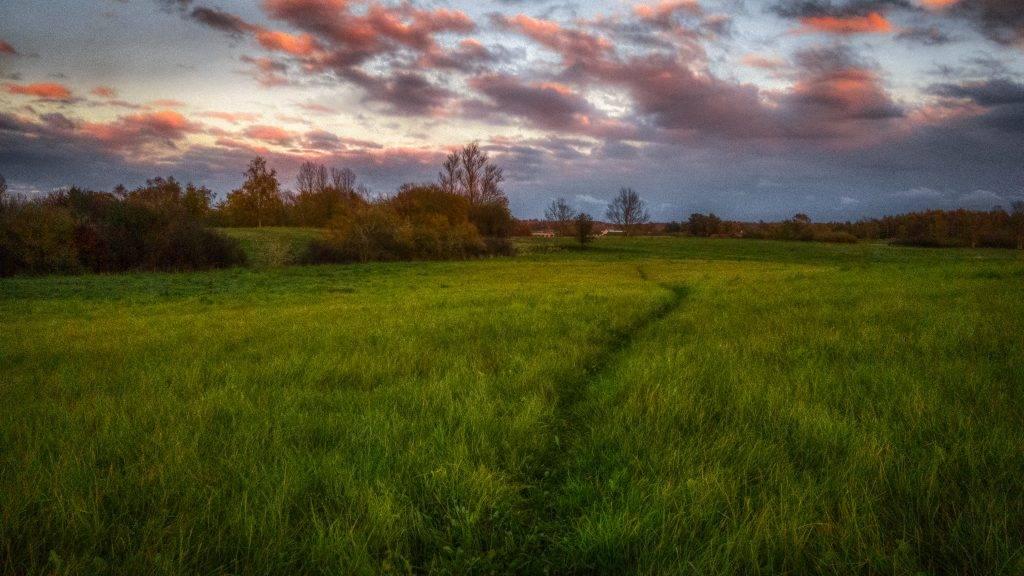
Probably not, but I posted it in the fall after roaming one of my favorite local areas, a piece of beautiful open land with tall grass, scattered trees, bushes and ponds. I have seen rabbits there, and herons. I have walked it in a foot of mud and snow and when the ground split in zig-zag cracks due to drought.
That's all over now. Today it looks like this:
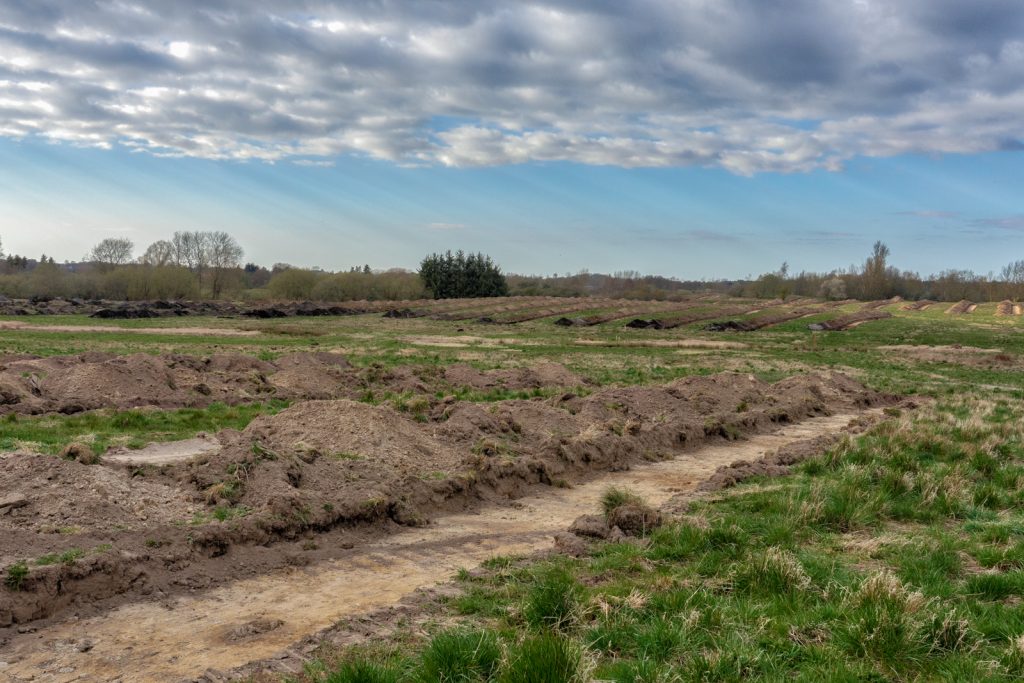
The land is now torn apart by hundreds of dirt piles and ditches like these. Progress is coming. In a year's time this will be a new part of the city, a new residential area for families with children. The rabbits and herons will be displaced and die. The rare piece of open, non-cultivated land will be but a memory.
I just realized all this the other day as I happily walked out there to see if I could put a new spin on this familiar territory with my camera. Sure, I'd seen that they were building a few houses near the road, but I never knew they were about to cover the entire 10 hectares in pavement, bricks, and hedges.
The sight of the destruction of this beautiful area almost made me nauseous. But it wasn't long before this new realization turned into an opportunity. Making my way across and around the newly dug ditches had led me close to the old farm house that struts in the middle of the area. I had always steered in a long circle around the farm house as I didn't want to get yelled at by whoever inhabited the place. Despite the lack of fences and crops, the land I was walking on may very well have been theirs.
But now, having ended up almost in their backyard, something seemed off about the place. I saw broken windows. I saw weeds everywhere. I saw junk randomly tossed on the ground. Holy cow, the the whole thing was abandoned!
Now, if you are not a photographer yourself, you don't know that the word "abandoned" is sweet music in any photographer's ears. Few things are as photogenic as abandoned locations that have been taken over by nature. There is just something about the contrast between human activity and the unrelenting nature that makes for good images.
Fearing a wrecking crew might show up at any minute to level the house, I unfolded my tripod and got to work. This could very well be my only chance to document the old buildings and the soul whose presence I could sense so clearly.
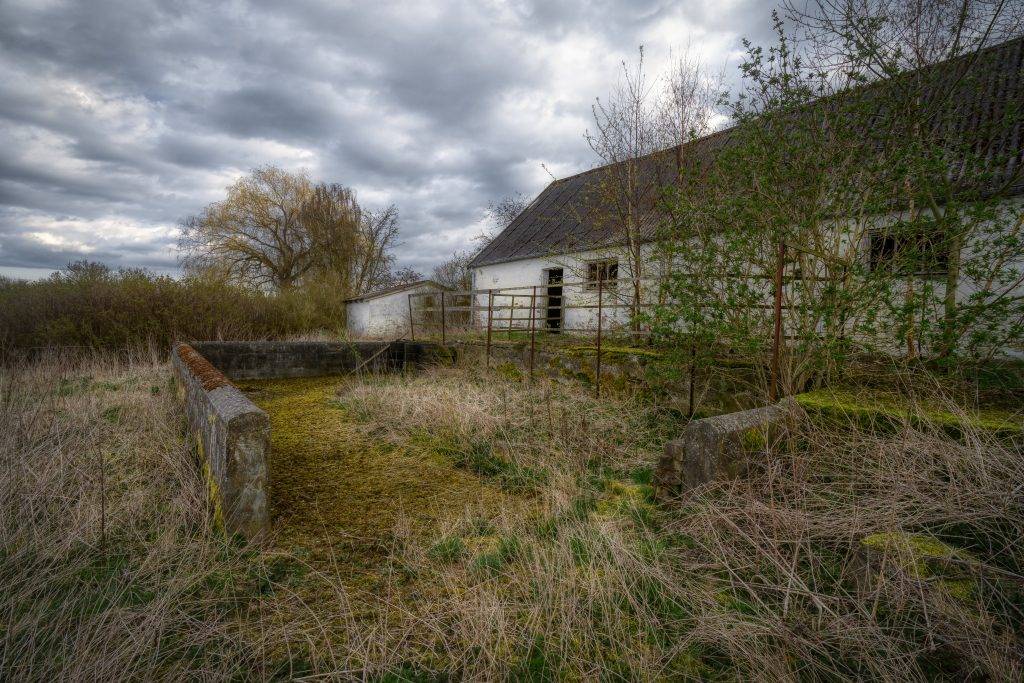
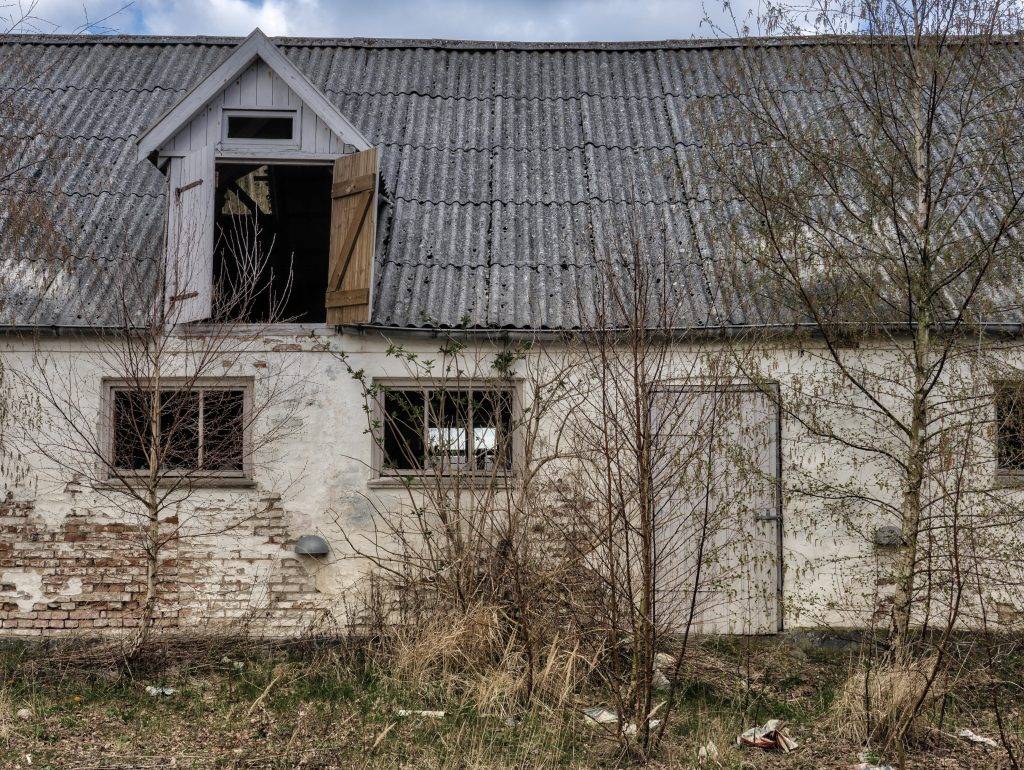
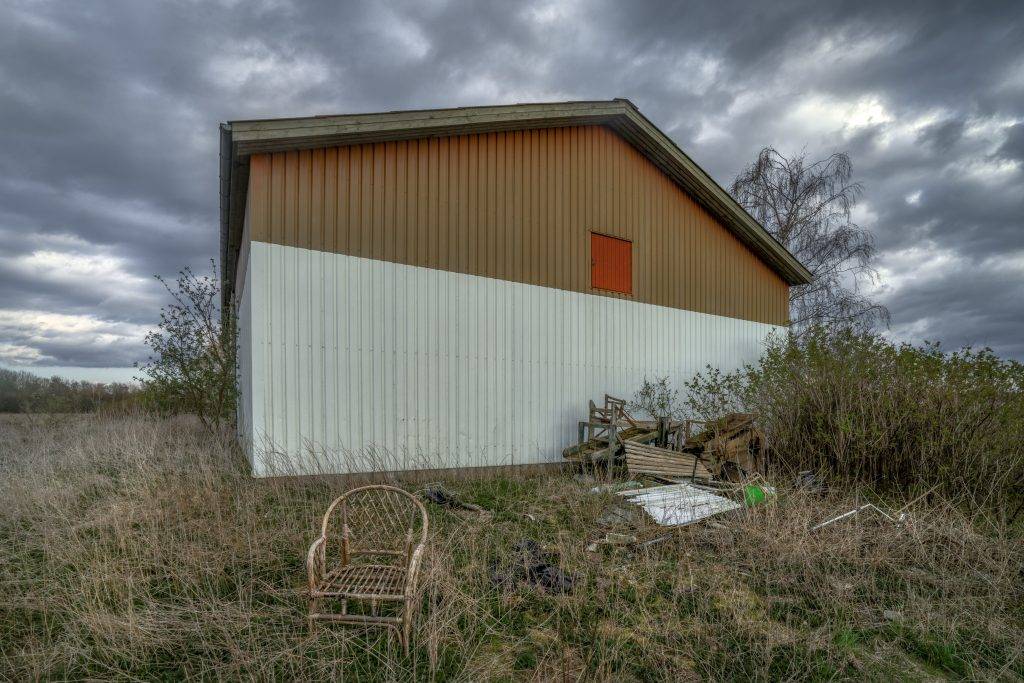
As I circled the house, it became more and more obvious that the farm had been in a state of abandonment and decay for years, possibly a decade or more. The walls were crumpling, trees were growing too close to the buildings. The inside of the stable showed no signs of animals having been present in ages.
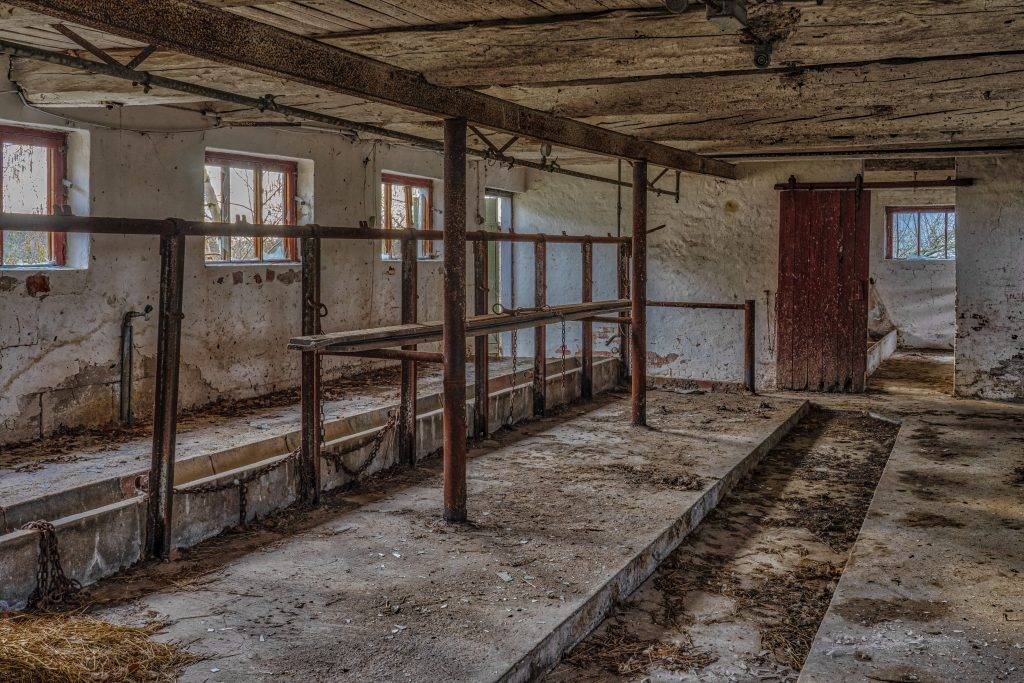
One time, however, I stopped in my tracks. A tricycle - the kind that old people use - was parked in the front yard. Was someone here after all? But no, at closer inspection I could see that there was no air in the tires. It had been sitting there since whoever lived in the house left for the last time.
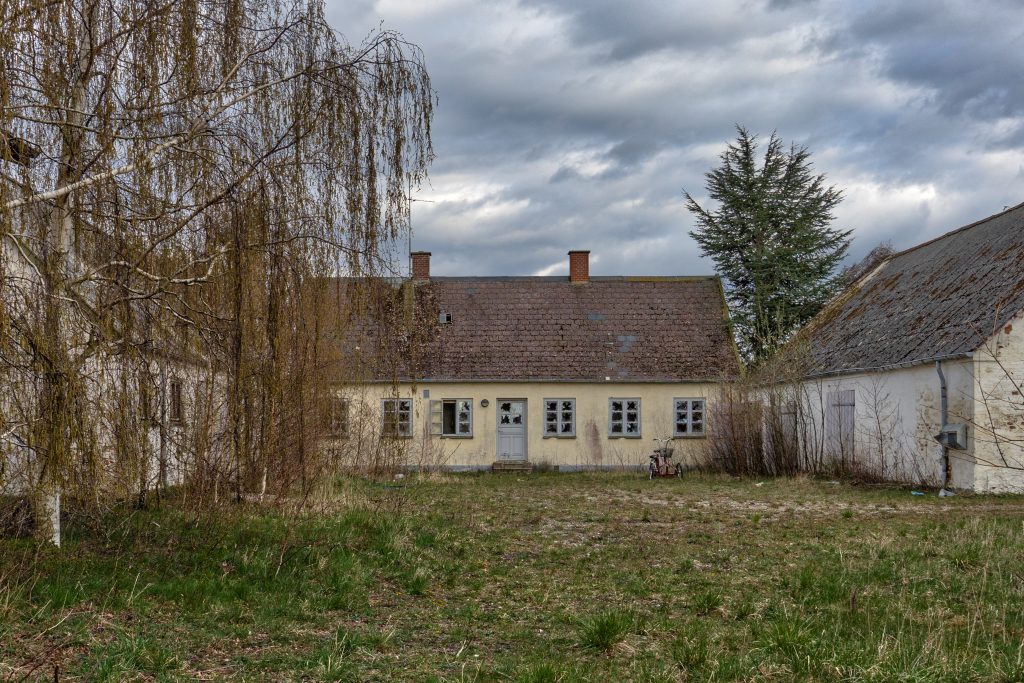
Maybe it was the tricycle, or maybe it was entering the below little backyard that suddenly made me envision life as it may have played out when it still existed here, and what led to its demise. Children running around, eventually growing older, moving away, uninterested in carrying on this farm that may have been in the family for generations. The old farmer and his wife, working the fields and livestock, until one day one of them dropped and could no longer work, leaving the other one lost and with no choice but to move into a retirement home for whatever time was left.
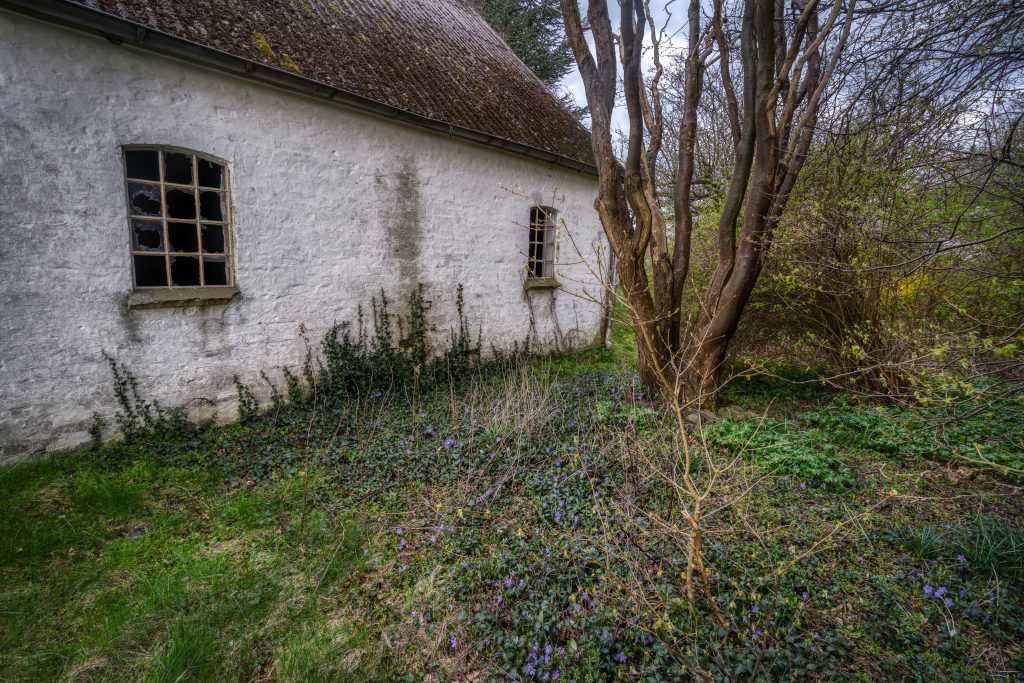
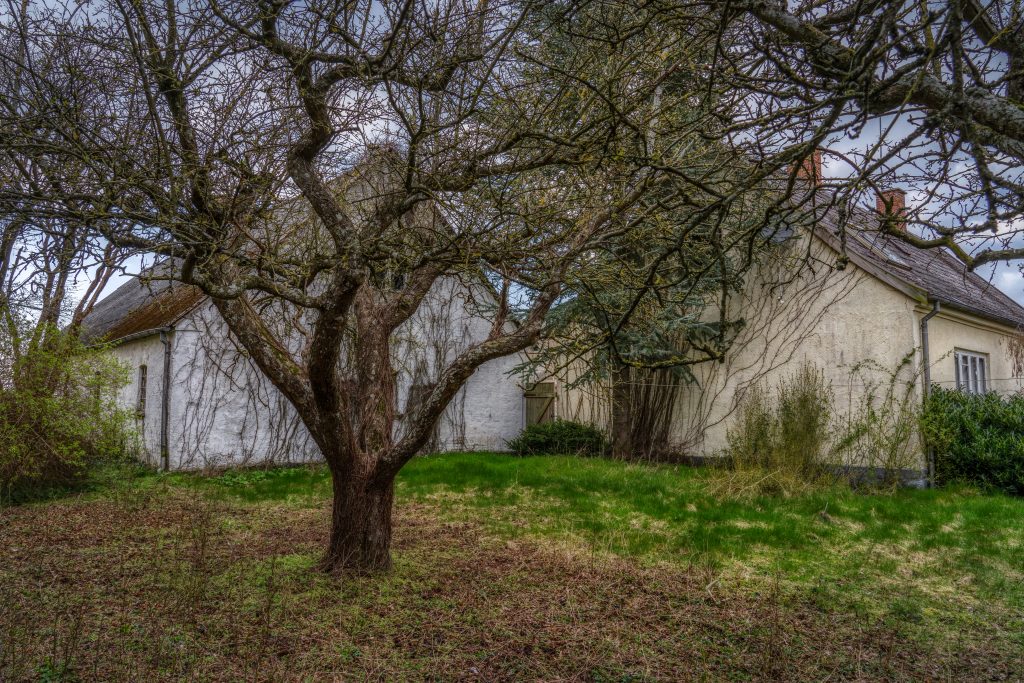
The sun was starting to set, and it was time for me to leave my new discovery behind. As I walked home, the passage of time felt more present than ever before. In less than a week I turn 50 years old. If the speed with which the last 20 years have gone by is any indication - and I fear that it is - the time when whatever traces I'm leaving behind start to fade is in sight. It may not be in shape of a farm, but it will probably be in the shape of what I have created on websites such as this one. And all these images, and thousands more, that no one has ever seen and no one ever will.
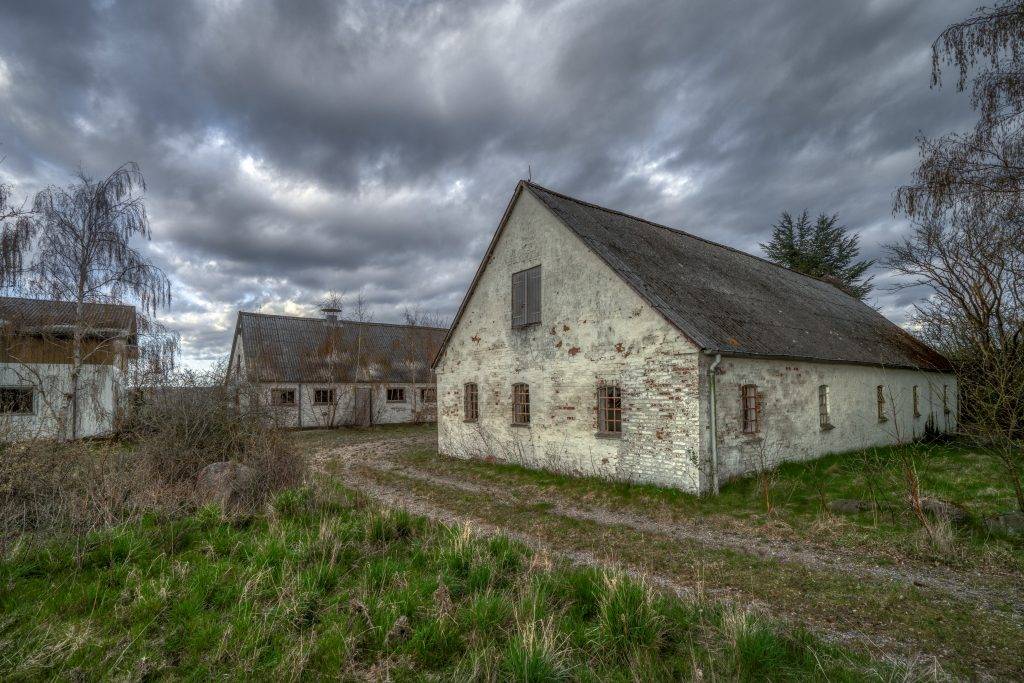
But that's okay. When I got home and told my wife what I had experienced, she said something to the effect of, "Before our house was built, this area was someone else's untouched ground, and they were probably pretty unhappy that new houses were being built."
Her words stuck in my mind. The world is constantly changing. Generations follow generations, and the current generations have no say about the future. We have to accept that the world is only on loan to us. And we just have to make the best of it while we can.
The old farm house will probably be torn down one of these days. The new neighborhood will rise from the ground. I will find new places to shoot my images that few people will ever see. And one day when I'm gone, a server will be turned off and the images, too, will be gone forever.
But somewhere in the world, another middle-aged, overweight amateur photographer will leave his house and go out to shoot his pictures.
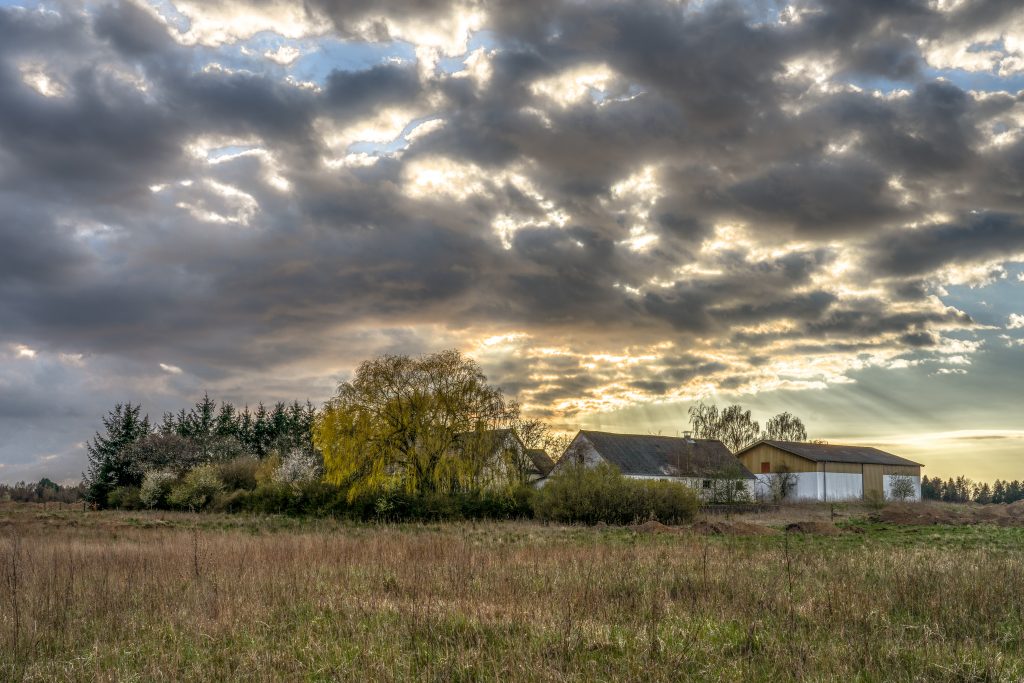
The other day I mentioned how depressing and uninspiring our current weather is. It's all a gray mass of gray and has been so for weeks. This is actually one of the reasons we survive the short days here in the Scandinavian hemisphere: nightfall at 3:30 in the afternoon is a relief compared to the gray mush we spend the day in.
Anyway, needing some exercise today and with no intention of turning it into a photo excursion, I saddled my bike and rode into the grayness, armed only with my cell phone. But of course, I had not gone for more than 10 minutes before I caught sight of the most beautiful and depressing abandoned... well, actually, I don't know what it used to be, but anything abandoned is worth a picture, so off the bike I hopped and used my cell phone to capture the below likeness.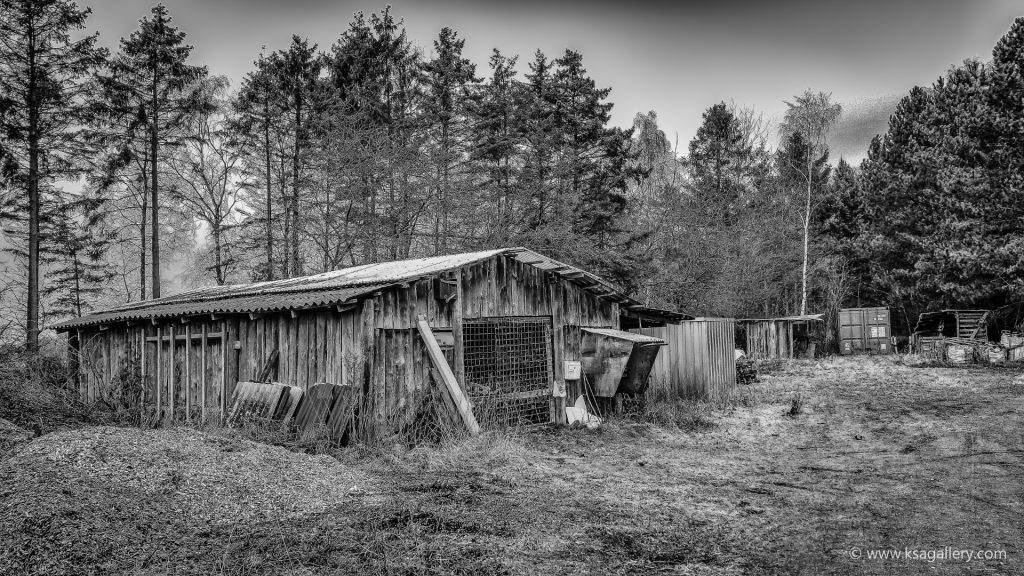
Sensing that all the grayness might be negotiable after all, it wasn't long until I came upon my next suitable motif. A flat, depressing, gray, dreary, and did I mention, gray, field of grayish brown soil, broken only by a string of bare, cold, industrial power poles. This is as gray and boring as it gets, so I figured I'd capture it if only to show you what you're up against in this country. However, while this is by no means a masterpiece, I felt that the spot actually had some potential, so I plan to return in the spring and see if I can capture a nice sunset here.
For the next image I once again had to rely on black and white to make it interesting. This may be my favorite shot of the day, but only after I took it through my Silver Effects Pro plugin.
The colors return for the next one, as the flock of geese taking off from a field makes up for an otherwise depressing scene of gray Danish flatness. I was lucky too, as a lone car passing by stirred up the birds enough for me to capture this pretty scene. A few pictures taken moments before this one, just showed the birds standing around doing nothing.
Finally, an attempt at mimicking Flickr star Nick Brundle whose favorite subject seems to be rolled up hay bales. I'm not quite at his level yet, but I was rather pleased with this one and its simplicity.
Well, while January and February will never be my favorite shooting months, I guess I got a little bit of confidence in myself today that you can in fact get something worthwhile out of the gray, light-deprived mush that we call winter around here. If nothing else, I got some much-needed exercise, covering more than 15 kilometers on my trusty iron horse.
... but that doesn't mean a photo can't be. I mean, I have personally been skeptical of black and white photography. If color photography had been invented first, would anyone have ever thought about black and white? I doubt it.
But lately I have come to appreciate the art of black and white photography and have turned more and more of my own pictures into black and white shots. What happened was that I realized black and white wasn't just black and white. Black and white can have as many different expressions as color photography. I discovered this when I installed Google's Nik Collection after Google started to offer this otherwise expensive software for free. Apart from well-known post-processing tools such as noise-reduction and sharpening, Nik Collection includes a tool called Silver Effect Pro that is basically an advanced black and white converter. And you don't even have to use the advanced options. The presets are usually enough to blow my mind and do the job for me.
So below are some of my own favorite black and white shots, all made using Silver Effect Pro, and with a feeble attempt to explain what, in my opinion, makes them work in black and white.
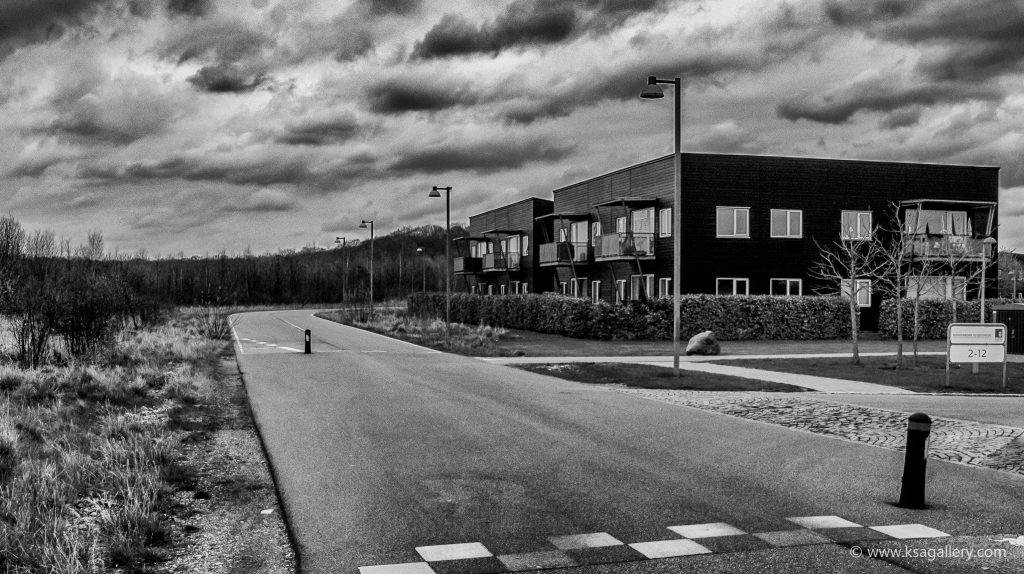
I think this was the picture that opened my eyes to the power of black and white. In color, a rather bleh image of a neighborhood development, in black and white... something, to me, much more powerful.
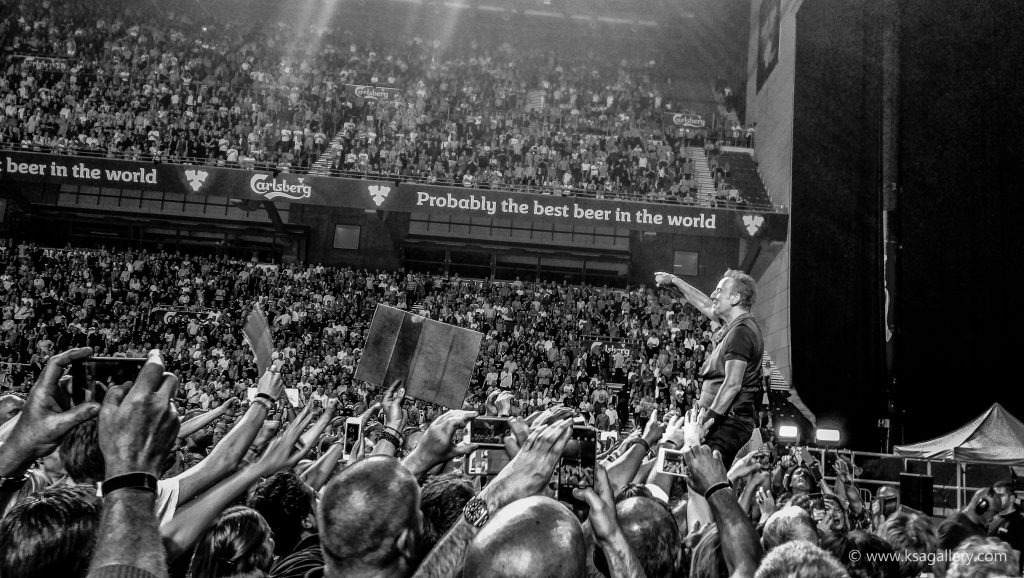
A picture I took at a Bruce Springsteen concert in Copenhagen in 2016. In this case, I think the black and white style makes an otherwise very detailed image more soothing for the brain.
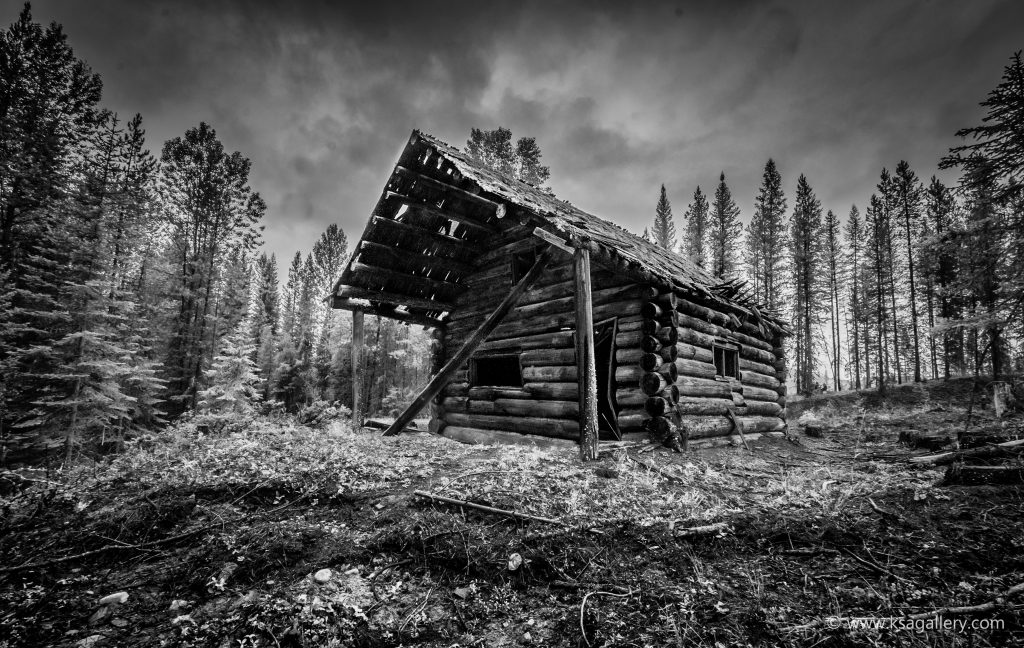
This abandoned cabin in Montana was a slam-dunk, I thought. But I just couldn't get it right in post-processing due to the colors just being completely uninteresting. So what do you do? Remove the colors, of course. That hit the nail on the head.

The black and white here helped erase the difference between the car and nature and thus emphasizing nature reclaiming its materials. I could never have done that in color.
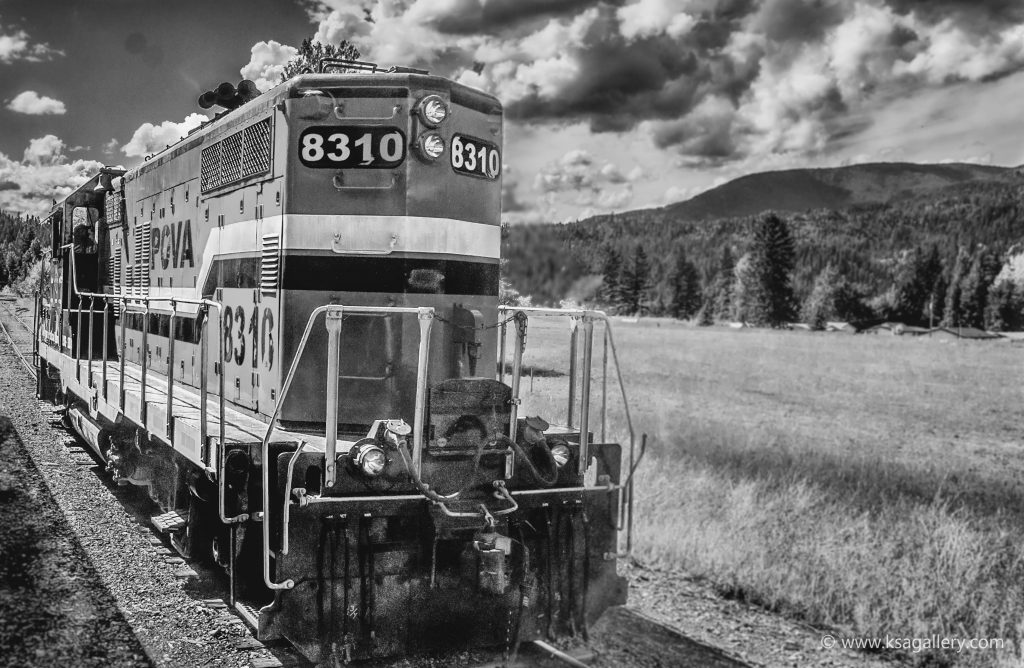
Another example of a picture that just didn't work very well in color, because the colors were just kind of blah. Still not for everyone I guess, but I like it.
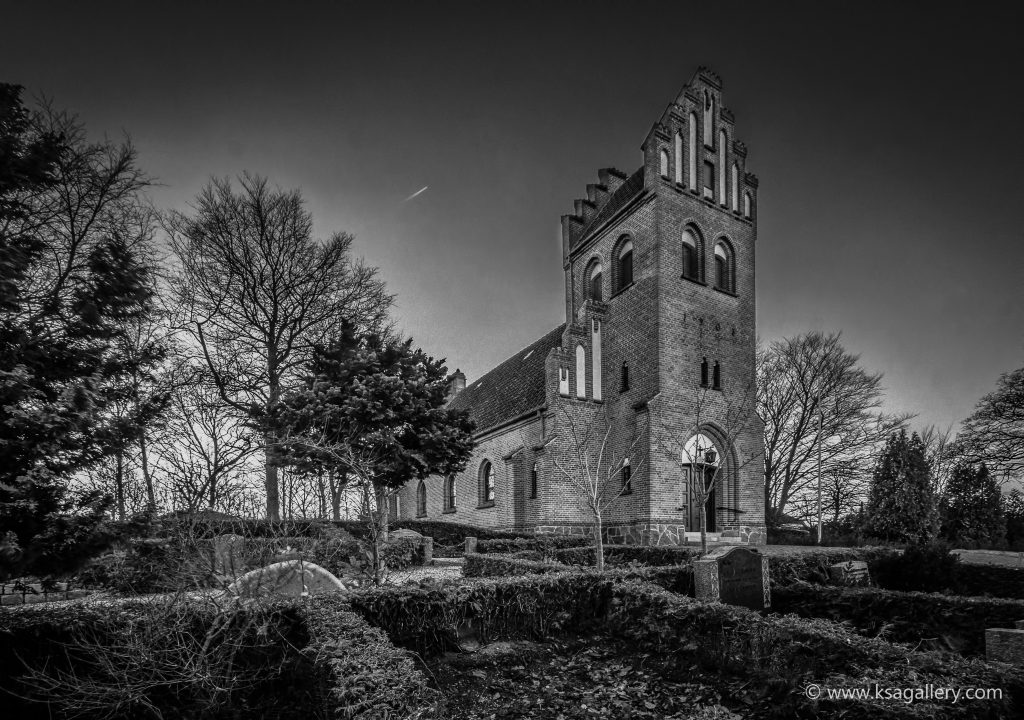
I posted a color version of this in my "Best of November" post, but I actually think it works even better in black and white. Technically and artistically one I'm rather proud of.
I went for another walk yesterday and came across an old favorite subject of mine. That is, I have always seen the photo potential in this old abandoned gate in the middle of the woods, but I never quite got it. Until now. I think.
One of the problems was that it's actually not easy to get in position to take a picture of the gate. You can't get far enough away from it to make it fit in a frame, unless you stand in front of it at a straight angle, which makes it visually rather uninteresting.
The solution, it turned out, was my cell phone. I am really impressed with my cell phone camera's panorama feature that allows you to stitch together nine images on-the-fly to great effect. Still, in order to get a good angle of the gate, I had to back into a bunch of branches, but from there I was able to fire off those nine images, and the phone managed to put hem together seamlessly.
While the above picture is proof to me that it's not always the most expensive camera that takes the best picture in a given situation, I did also take a couple with my full-frame camera that I was happy with. Here's one:
And with that I left the gate to its hopeless struggle of keeping intruders out of someplace that is no longer there, and my own struggle to take a decent picture of it had come to an end.